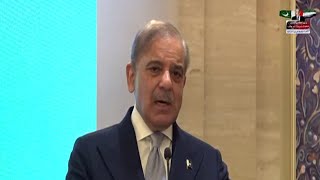The Clean Green Pakistan is a people's movement and it is driven as everyone's responsibility with a focus on behavioral change to create a safe and sustainable environment for all and sundry in Pakistan. Environmental sustainability is central to the overall development landscape of a country especially for handling the implications of poverty and creating employment opportunities.
With this measure, the government is committed to make necessary institutional arrangements and engagements with stakeholders to promote the best practices and methods for the conservation and protection of natural and manmade resources.
Under the auspices of our government, the Ministry of Climate Change has developed a national roadmap for Clean Green Pakistan Movement through consultations and dialogues with different stakeholders. This roadmap defines the vision and strategic priorities of our Government to make Clean Green Pakistan a reality while serving as a guideline for the provinces and other stakeholders to design and align their programs and interventions accordingly.
The Clean Green Pakistan is meant for harnessing the power of the public advocacy, under Naya Pakistan, through engaging and participating in local development initiatives. This national campaign has a specific focus on empowering the citizens to seek the access to basic services but also making themselves equally accountable and responsible for Clean Green Pakistan. It is important for the people to understand the meanings and context of Clean Green Pakistan not only for themselves but also for their future generations.
The Federal Government will make periodic review of this document, and will appreciate the successes through different mechanisms like recognizing the best cities, universities and institutions through giving awards and certificates on periodic basis for generating a healthy competition among the cities and citizens of Pakistan.
PM launched Green Pakistan people's movements
The Prime Minister of Pakistan launched Clean Green Pakistan movement on 8th October while setting its target at making Pakistan appear as a vibrant and developed country on the map of the world. As environment has significant impacts on the well-being of human beings and is of significant value in overcoming the infectious diseases, hence, since the day one Government was mindful to take necessary actions for creation of a safe environment.
Five pillars: Clean and Green Pakistan movement
The Clean and Green Pakistan movement builds on five pillars with a focus on behavioral change and institutional strengthening. These pillars include Plantation; Solid Waste Management; Liquid Waste/ Hygiene; Total Sanitation and Safe Water.
Since its launching, a significant number of initiatives have been taken at both the federal and provincial levels through the engagement of government, civil society and private institutions. However, there was a realization for developing a national document that would serve as guideline for the stakeholders and institutions engaged in CGPM.
Therefore, the Ministry of Climate Change organized deliberations and dialogues along with a national level consultation meeting for the development of this document.
The national roadmap identified the strategic priorities ranging from reforms required for an enabling environment to the effective implementation approaches with appropriate monitoring and reporting mechanisms to be in place for the successful implementation of CGPM. The document includes specific guidelines for: how to integrate CGPM in PSDP initiatives; guidelines for schools, colleges and universities; national volunteer programs; and key activities and performance indicators from relevant ministries and institutions of Pakistan.
Ministry of Climate Change playing an effective role Currently MoCC is also in the process of developing a specialized mechanism for effective monitoring and reporting of CGPM initiatives in the country through dashboards and national portal.
This document lays a greater emphasis on collaboration and institutional strengthening by sharing the human and other resources. As CGPM is envisaged as people led initiative, therefore all of its strategic actions are people centered.
Responsibilities:
Acquire key knowledge about Clean Green Pakistan policies and procedures. Mobilize the local communities/ target groups about impacts and implication of climate change. Disseminate key information about safe and healthy practices under Clean Green Pakistan.
Five pillars of Clean Green Pakistan Movement
Specific Activities for five pillars of Clean Green Pakistan Movement
Tree Plantation
Annual tree plantation ceremony with the theme of planting one plant by one student in college area and nearby public places.
Participation in seed throwing campaign under local forest department. Organize two annual awareness campaigns in sowing seasons, in which at least with the theme of tree plantation and green environment by the college shall be displayed at public places.
Solid Waste Management
Organize two annual cleanliness weeks in local government identified areas. Disseminate at least 100 banners/posters with the theme of clean environment and segregation of solid waste.
Introduce waste segregation and recycling of college solid wastes in the hostels and campuses. Discourage the use of unnecessary waste through promoting the use of recycling materials and products.
Allocate and mark landfill site for college solid waste- contracting with local Government or private sector for effective utilization of recycled waste and arrangements for appropriate disposal of non-recyclable waste.
Liquid Waste Management/Hygiene
Organize hand washing days with support of private sector in adjacent communities and schools. Discourage the use of open drains for toilets and waste drainage except for storm water.
Disseminate septic tank designs and management related broachers to 1,000 households in adjacent community. Install wastewater treatment for college wastewater;
Total Sanitation/Toilets
Celebrate toilet days in high risk communities (identified by Local Governments); implement PATS project in open defecating community of 100 households annually; make all toilets and hand washing facilities functional in the colleges.
BR100
7,841
Increased By
30.9 (0.4%)
BR30
25,465
Increased By
315.4 (1.25%)
KSE100
75,114
Increased By
157.8 (0.21%)
KSE30
24,114
Increased By
30.8 (0.13%)






















Comments
Comments are closed.